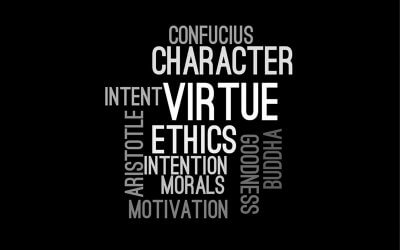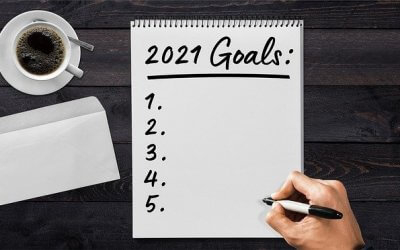Discover how understanding the limitations of averages and embracing probabilistic thinking can improve decision-making and risk management in business.

What has COVID done to Company Culture?
The effect of COVID on company culture is an issue for all business leaders to consider seriously. I see the following areas for examination:
- Have you lived your culture during COVID?
- How are you maintaining your culture and connections in a WFH world?
- How are you instilling your culture into new hires in a WFH environment?
Have you lived your culture during COVID?
COVID has forced many companies to pivot, cut costs, and adjust strategy. However, did the leader and management team live up to the company’s culture while executing these changes? As everyone’s cultural values are different behaviors to consider.
- Did you check in with your employees regularly to see how they were coping?
- Did you communicate effectively and often with your employees, so they knew what was happening?
- When making changes, did you explain why and where the company’s new direction was aimed?
- When terminating people, did you do it in person or by email?
The above is just a sample of behaviors that maybe didn’t live up to the company’s values. If you didn’t, then you need to work hard to fix it. As with any crisis like this, there are a few key steps:
- Get in front of it. It has happened, so it is hard to get in front of it. However, do an audit of behaviors and values during COVID. Identify the lapses and then plan accordingly. Don’t wait for the Zoom cooler talk to destroy any belief in the companies values.
- Admit It. Let your employees know you recognize that you didn’t live up to your values in the identified situations.
- Own It. Say it was the leadership’s fault. The buck stops with you, and that is why you get paid the big bucks! Deflecting the blame will only weaken a fragile state and create further disbelief in any values you may have.
- Correct it. Layout a plan to correct the behaviors from happening again and what steps the organization will take to reinforce its values in the future. This plan needs to have SMART metrics tied to it so that employees can see the progress being made and it not just more “CEO Bingo.”
Maintaining your culture and connections in a WFH world?
For many, the move to WFH has gone well overall. Productivity is generally up, and work is getting done. Many CEOs and business leaders are considering to what degree they can allow WFH going forward, permanently, one to five days a week, etc. However, one of the reasons that WFH has gone so well is that before COVID, we had strong relationships with our coworkers. We knew them, had worked with them, and most importantly, had built some degree of trust. But the longer we don’t connect with them, the weaker these bonds grow. While we are connecting with them over Zoom, Teams, Slack, or email, that is not the same as in person. If we lose the culture or connections, it weakens the ability of the company to respond to other threats, and people will leave for companies where they see better relationships.
The more time we are remote, the bonds between us grow weaker. Long distant relationships have a 58% chance of success, basically a coin toss. There are stronger connections in a romantic relationship than a work one, so the chances of a “long-distance” work relationship working are less than 50%. So leaders need to figure out how to maintain the connections and culture among employees as they go forward with a WFH policy. If employees are only going to be in the office rarely, the company needs to increase how it builds connections between employees and promotes its culture.
Regular gatherings of employees at events where they can strengthen their relationships will be essential. Getting them to share personal information to build stronger bonds will also be a crucial part of the effort. Doing this will differ among companies, but figure it out and ensure that the events have a clear purpose that everyone understands and get feedback on to know if you are achieving your goals.
Instilling your culture into new hires
New hires are posing the most difficult challenges for companies. Historically we know that 70+% of people regret making the job change on the first day. Now we are in a WFH environment where there are fewer personal connections. If we cannot build those connections and get them to buy into the culture, they will shortly leave, which is expensive for the organization and poses new problems when people are hard to find.
The leader and leadership team need to work with their HR departments to figure out how to effectively onboard new hires and simultaneously install the firm’s culture and develop personal connections among the teams. Achieving this won’t be easy, but the effort will pay huge dividends.
Why Does This Matter?
It doesn’t take much to destroy the employees’ belief in the company’s values and attribute them to just words on a wall. If this is where you are, the road back to get alignment around values will be hard. Without core values, nothing connects the employees to a common bond and purpose, so they are more likely to leave.
If your employees are not connected, they are less likely to have a good friend at work. Without a good friend in an environment where they spend a third of their time, there is less keeping them attached. With demand for employees increasing, and thus wages, they will be tempted to move if there is no downside to leaving the tribe.
Those organizations that live their culture and whose employees have strong bonds of trust will outperform those that don’t. The work to achieve this is not always easy but very beneficial.
Copyright (c) 2021, Marc Borrell
Recent Posts
The “Flaw of Averages” Causes Havoc for Businesses
What is Your Strategy, In a Sentence?
If you are banking on the vaccine returning us all to “normal” quite quickly, in the famous words of Dr. Akande, “Hope is not a strategy.” Your organization should be preparing a well-defined strategy for 2021 and beyond. Once you have this strategy, the ultimate question: can you clearly articulate it in one sentence? Distilling your strategy into a single sentence is a powerful tool, both for your legacy and your team effectiveness. Not sure where to start? I offer a plug-in formula to set up your strategy sentence.
Character Matters
“It’s easier to hold to your principles 100% of the time than it is to hold to them 98% of the time.” — Clayton Christiansen. I have often written about the importance of a company’s Core Values. That’s because no matter what words you may have chosen as values, your organization’s Core Values are on display in how leadership and employees actually behave. As I’ve said before, how you have acted in the last twelve months will define your career for the next decade. Your character, and your company’s character, matters.
New Year’s Resolutions, Once More Unto the Breach
The holidays have been even quieter than normal, which has given me plenty of time to reflect on my New Year’s resolutions. Looking at 2021, I decided to use a completely new approach to lay out my goals. The result of my new approach? A highly-detailed, accountable, actually achievable plan for the next year (I think). Wondering what this process looks like?
To Vaccinate or Not to Vaccinate, that is the Question
What do your employees, peers, and leadership team think of the COVID-19 vaccine? Will you require the vaccine, or will you let employees make individual decisions? As a leader, you need to steer the discussion about vaccines in your organization with your Core Values in mind. No matter what strategy your organization takes, the most important factor is going to be how you communicate your decision.
3 Ways You Could be Undermining Your Core Values
Can you answer “Why does your organization exist? What are your core values?” Great. Now, would your latest entry-level employee give a similar answer? How about someone who has been at your company for a year? Your core values give your organization a guiding mission. Many organizations pay this idea lip service, but their true commitment to their core values was tested this year. As we close out 2020, there’s no better time to examine how your organization is approaching your core values.
Are You Prepared for 2021 With Enough Cash?
Companies don’t go bankrupt because they lose money; rather, they run out of cash. Where are we, heading into 2021? First, you can expect your cash to get tighter as we weather the current economic slowdown. Then, with a vaccine on the horizon, you will need to be positioned for growth. If you don’t have the cash you need, have you looked at how you can generate the cash internally? More on how to improve your cash conversion cycle…
Tony Hsieh, a Corporate Culture Icon, RIP
In his work as Zappos CEO and elsewhere, Tony Hsieh believed, and proved, that culture is the most important thing in an organization. According to Hsieh, if you get the culture right, the rest will take of itself. How did Zappos do it? You can take a look at everything from the company’s interview questions, to “The Offer” to leave a position as a new hire. Hsieh believed that a company’s brand is just a reflection of the culture, and his legacy is felt across so many industries.
CEO, Try Thy Hiring System
How does your company hire? I’ve seen the good, the bad, and the surprisingly ugly hiring processes in my career. From the HR email mix-ups to the interviewer watching the World Series while I responded to his questions, I’ve learned that you can tell a lot about an organization simply by examining the hiring experience. Are you chasing away the kind of people you need at your company?
What is Leadership?
What is it, exactly, that great leaders do? There are plenty of overused adages about “leadership” in business. It’s worth examining the tropes around leadership, plus the traits of the leaders who actually leave a mark. Great leaders are forged through adversity, and they leave a legacy. What does that look like in your organization?










